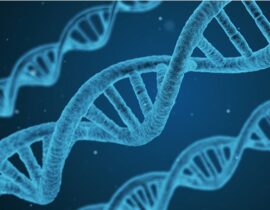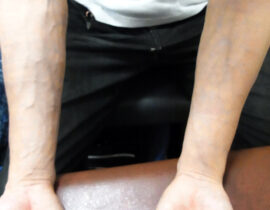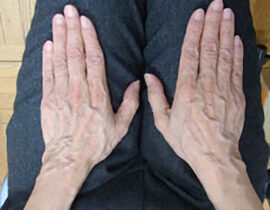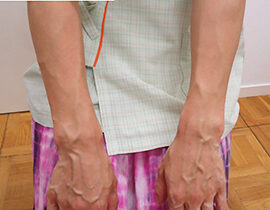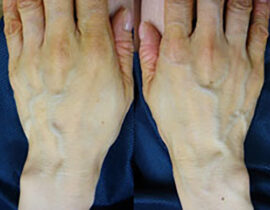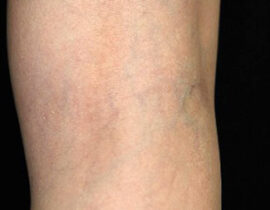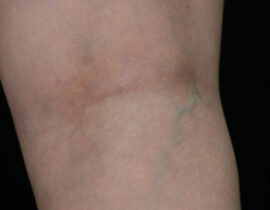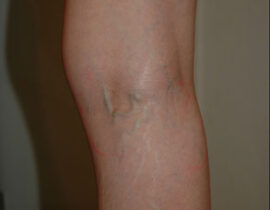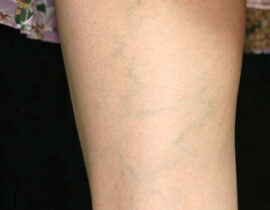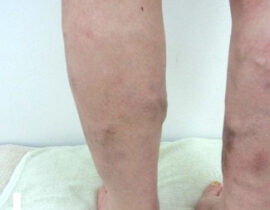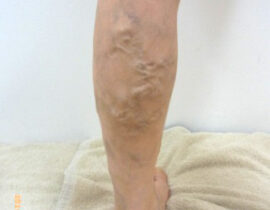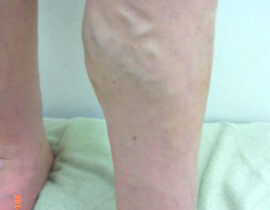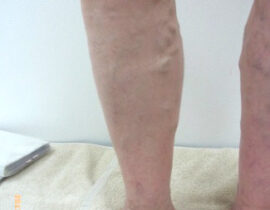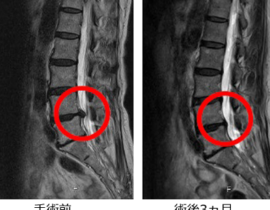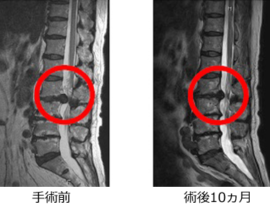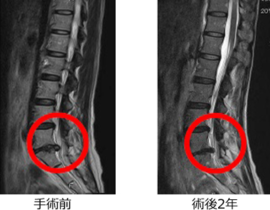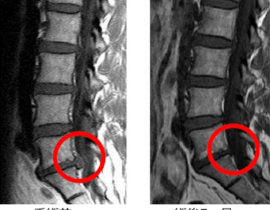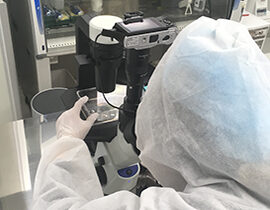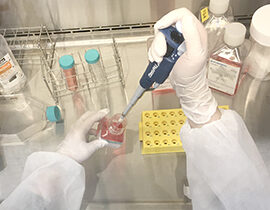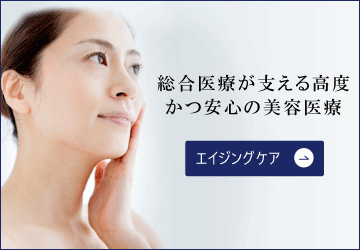What is Varicose veins
Varicose Veins Overview
Varicose veins are rope like, enlarged veins. Most varicose veins are twisted and gnarled. They can be classified into the following 4 types.
| Saphenous Type | Segmental Type | Reticular Type | Web Type (Spider Veins) |
|---|---|---|---|
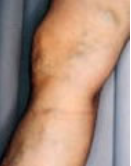 |
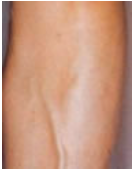 |
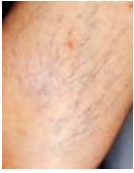 |
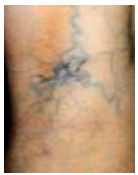 |
| This is the most common type. These occur in the long and short saphenous veins and their branches. They are vein valves that prevent blood from flowing in the wrong direction (reflux). They become weak or malfunction in the groin or knee. | These occur in the peripheral and small veins. | Swollen subcutaneous veins spread net-like. The size of vein could be 2-3 mm in diameter. | Dilated capillary veins less than 1mm in diameter that exist just below the skin. |
Risk Factors
- Female
- Aging
- Family
- Pregnancy and Delivery
- Jobs that require standing such as: teachers, hair stylists, cooks, nurses and flight attendants.
Frequency
10% of females over the age of 40 experience obvious symptoms. Including mild variations, varicose veins affect 43% of over 15 and 62% of over 30 of both females and males.
Major Symptoms
- Cosmetically unattractive
- Most patients visit clinics for cosmetic concerns, such as visible bulging, twisting veins that are visually unattractive.
- Tired, heavy, dullness or burning sensation
- Reflux of blood causes pooling of blood and venous high pressure, resulting in those symptoms.
- Pain
- Pooling of blood sometimes causes pains.
- Cramping
- Some patients experience leg cramps at night/when walking.
- Swelling
- Venous hypertension sometimes causes water leakages from veins, resulting in swelling.
- Itching
- Itching with/without eczema sometimes occurs.
- Inflammation and eczema
- Skins around veins sometimes lead to eczema or inflammation.
- Ulcer and darkness of skin
- Enlarged veins and skins around the area cause bleeding, resulgting in ulcer and darkness of skin. Once ulcers are made, they grow easily and take a long time to cure because of the bad blood circulation.
Causes
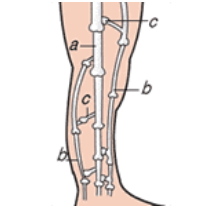
The venous system of the lower extremities consist of: (a) deep system and the (b) superficial (greater and lesser saphenous veins). These two systems are interconnected at the groin and knee. Also they are connected via (c) perforator veins.
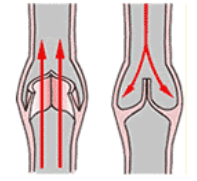
One-way valves are present at the junctions between the bifurcation point of the deep and superficial system, at the knee and the groin junctions. These valves play an important role in maintaining normal blood circulation system.
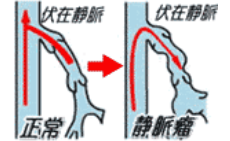
The veins in the legs sever to bring blood to the legs and the heart. The weight of all the blood in the legs is very heavy. Valves prevent blood from flowing back down the leg by opening in the direction of the heart and closing when blood tries to move towards the feet by gravity. The blood pressure at the junctions (groins and knees) is very high and the valves can be damaged or loosened. Blood will flow backwards when closings are weak or the valves are leaky. The veins downstream that are now unprotected by valves further upstream are exposed to the weight of an increasingly high column of blood. These downstream veins cannot endure the pressure of the column of blood and engorging and distorting the veins in your leg.
Treatment options
- 1. Non-invasive, Basic Treatment
- Elevate legs at bedtime. Regular exercise, avoid standing for a long-time. Wear compression stockings. This treatment will not cure nor eliminate existing vein problems. However, this will help slow the progression of the disease and alleviate symptoms.
- 2. Sclerotherapy
- Sclerotherapy is an injection of a solution (sclerosant) into the varicose vein and scar the inside lining of the vein. This causes the vein to close. The procedure is an outpatient therapy that takes 10 to 15 minutes. Sclerotherapy is effective only for spider veins and some moderately-sized bulging veins but sometimes there can be a relapse. Temporary bruising or pigmentation change or staining at the injection sites can occur.
- 3. High ligation
- In most cases, varicose veins occur when the valves are damaged. Surgical ligation is generally done to isolate the damaged valves. The vein is first tied off (ligated) by tying a small stitch around it to block blood flow. If only one valve in the ligated region is damaged, the ligated vein may be left in place. Sometimes this procedure is done with sclerotherapy.
- 4. Stripping
- When numerous valves in a vein are damaged, the damaged vein must be stripped or removed. To strip a vein, an incision is made below the damaged vein and the vein is grasped and surgically removed. Most people are able to return to their normal daily and recreational activities within a few weeks. Some common side effects from vein stripping surgery may include temporary pain or discomfort, bruising, hematoma, numbness, and less frequently, infection. Vein stripping is an invasive procedure and should not be performed on older individuals for whom surgery poses a risk due to other medical conditions.
- 5. Stripping surgery with local anesthesia
- tripping surgery is very painful, therefore, full anesthesia is generally used, while local anesthesia can also be applied using specific anesthesia such as intravenous anesthesia or LA anesthesia. Patients who undergo this surgery are able to go home the same day, but limited clinics/hospitals offer this surgery.
- 6. The Radiofrequency (RF) procedure
- This procedure, known as VENUSTM, was developed in the US a little before the EVLT. A special devise is positioned in the treatment vein and radiofrequency energy is then transmitted from the devise, heating the vein wall up to 85 degrees which causes contraction of the vein wall resulting in the closing down of the veins. This procedure is invasive and effective, although inserting the device is complicated and the surgery is expensive. As of Feb 2005, no clinic in Japan provides this treatment. The RF treatment, as well as EVLT, is not covered by health insurance.

